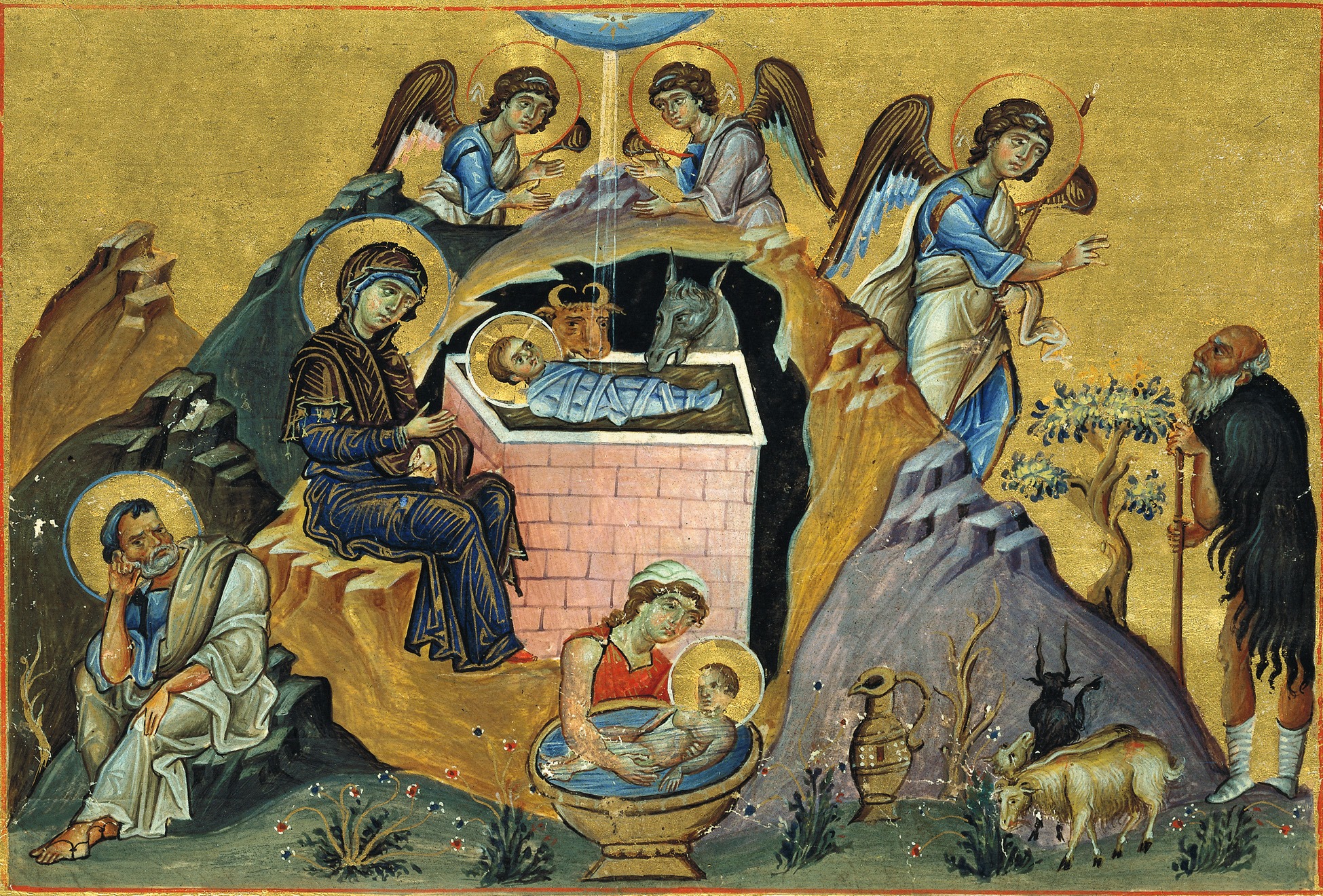It’s that time of the year again! 🎄⛄️ We at DBBE would like to wish you all a very Merry Christmas with – what did you expect 😉 – a fitting book epigram.
✒️ Νῦν, οὐρανέ, σκίρτησον, εὐφράνθητί μοι,
ἡ γῆ δὲ πᾶσα σὺν βροτοῖς χόρευέ μοι·
θεὸς γὰρ ἐξέλαμψεν ἐκ τῆς παρθένου,
ὁ μητρὸς ἐκτὸς καὶ πατρὸς φανεὶς δίχα,
ὁ πᾶσιν ἀπρόσιτος ἁπτὸς ἀρτίως.
Ὦ θαῦμα καινόν· πῶς θεὸς μικρὸν βρέφος;
Μάγοι τὰ δῶρα προσφέρουσι τῷ βρέφει,
νόες τὸν ὕμνον καὶ τὸ θαῦμα ποιμένες,
σπήλαιον ἡ γῆ καὶ φάτνην ἐρημία,
ἄχραντον ἡμεῖς παρθένον καὶ μητέρα.
📖 Jetzt, Himmel, tanze, freue dich mit mir!
Du ganze Erde, juble mit den Menschen!
Denn Gott erstrahlte aus der Jungfrau Schoß,
der ohne Mutter, ohne Vater ward,
der Unnahbare – allen greifbar nun!
O neues Wunder! Gott -ein kleines Kind!
Geschenke bringen ihm die Magier,
die Engel preisen ihn, die Hirten staunen,
-die Höhle beut die Erd’, Wüste die Krippe-
und wir die unbefleckte Jungfrau-Mutter.
🌐 https://www.dbbe.ugent.be/types/5515
This poem was written in the 11th century by Gregory of Pardos, archbischop of Corinth. He wrote not only several grammatical and rhetorical works, but also a commentary on the Canons of Kosmas of Jerusalem and John of Damascus on the Feasts of the Lord and the Theotokos. In Vind. theol. gr. 128, a manuscript from the 13th century, the epigram above is written at the beginning of his commentary on the Canon on Christmas. Within the same manuscript, eleven other feasts are also accompanied by a poem of Gregory’s hand.
